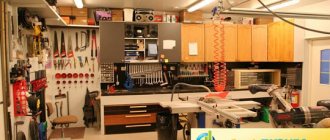Wood processing is one of the oldest crafts in human history. It provided a stable income for many generations of those who practiced it professionally. The simple fact does not need proof that with modern technologies and rational organization of business, a woodworking shop is capable of generating a good and stable income.
Where to start
And you should start with a simple understanding of the fact that no business is possible without a well-thought-out plan for the near and distant future. This applies to any business in general. Both commercial and industrial. Woodworking is no exception. A business plan implies a strategy for the development of an enterprise for a specific period of time. It should indicate the economic and financial indicators that management is obliged to achieve, and the ways to achieve these results.
Woodworking business plan and financial model
Choose the right kit
| Business plan template | Ready-made business plan with calculations and financial model in Excel | Ready business plan with calculations |
| The ideal solution to plug in your numbers and get a complete business plan | The optimal solution for those who want to save maximum time and get the best results | An ideal solution to understand the essence of a business or raise money to create it |
| 900 rub. | 25,000 rub. | 12,000 rub. |
| 290 rub. | 3,500 rub. | 1,000 rub. |
An ideal solution for those who know how to work in Word and Excel and who only need to get a ready-made template with a couple of examples to do everything on their own.
Our advantages:
| 7 We've been making business plans for years | 350 developed business plans | 30 billion rubles scale of projects for which we drew up business plans |
With us, the business owner receives a turnkey business plan:Comprehensive market analysis allows you to understand the real situation on the market Detailed financial calculations provide a clear action plan Calculation of three project development scenarios allows you to choose the best way to develop the project from a financial point of view | ||
How to plan a business
It is simply impossible to foresee absolutely everything in advance. Such a seemingly traditional process as woodworking, the business plan of which includes several important points, requires a mandatory level of qualification both on the part of management and all personnel of a small enterprise. Without this most important factor, any plans, even carefully calculated ones, are doomed to fail.
When drawing up a business plan for a woodworking enterprise, it is necessary to clearly understand the state of affairs in the regional market and the degree of demand for the products and services that you intend to offer to potential consumers of your products. A rational business plan includes organizational, production, marketing and financial components.
Woodworking, whose business plan and rational marketing are correctly focused on the needs of the construction market of the region, is simply doomed to success. Demand for lumber is stable. In short, business planning comes down to correctly identifying the market need for products and finding a way to produce these products.
Right choice
Woodworking business is a profitable and promising business. In the market, the material you make, be that as it may, will be in demand all the time. Wood is used in the construction of houses, in the production of furniture, and in performing any finishing work.
Before organizing your own enterprise, you will need to draw up a business plan for a woodworking business. This document will help you determine all necessary expenses. Market research will also be required.
You can draw up a business plan for a woodworking business yourself, or you can give this business to qualified specialists.
Required documents
Wood processing in any of its specializations does not require state licensing. However, it is best to do some approvals before starting production. Woodworking is essentially about materials that burn well. Therefore, the entire production base must fully comply with technical fire safety standards.
The fire department should be contacted to inspect the production premises and surrounding areas. Typically, the inspector compiles a list of detected non-compliances with standards and issues an official order to correct them within a certain period. The same algorithm of actions applies to communication with representatives of the sanitary and epidemiological station. The production base must comply with environmental protection standards and labor safety conditions.
These are the current realities. Without communication with administrative structures, not a single type of manufacturing business is possible, including woodworking. A business plan can only be implemented after passing some bureaucratic approvals. An attempt to optimize this process is quite possible, but one should be aware that all the trump cards in this game are not on the entrepreneur’s side.
Wide opportunities with a manufacturing franchise
Own production is one of the most promising and stable types of business. Production activities in Russia can bring significant income to the owners of the enterprise due to the significant markup that is typical for most of the most popular types of products.
Production involves the creation of an enterprise with a sufficiently high level of capitalization. This type of activity opens up great prospects for business development. You can start with small production volumes and gradually increase them to industrial scale. In addition, the manufacturing plant itself is a valuable and liquid asset.
The franchising scheme is used in many types of industrial activities. Including, today you can open a franchise in the following most popular areas of production:
- auto chemicals and auto cosmetics;
- tiles: paving, rubber;
- clothing, including children's;
- beer;
- furniture;
- Construction Materials;
- houses and baths;
- doors;
- household chemicals;
- sewing;
- shoes;
- Food;
- cheese;
- food.
Choosing a direction
Woodworking technology differs mainly in the degree of impact on the material being processed. Conventionally, wood processing can be divided into primary and deep. The primary cycle involves the production of construction lumber, and subsequent cycles involve the production of joinery products of varying complexity from the resulting wood. Accordingly, woodworking enterprises usually specialize in one direction or another. And much less often they combine the first with the second.
Sawing round wood
This is the easiest way to make money. The initial costs of this business can be recouped in one construction season. The woodworking technology of the primary cycle is not particularly complex. Sawing round wood into building timber of different sections and into boards is usually done using a band-type sawmill.
You can even do without capital premises and install the equipment only under a canopy, protecting the production process from precipitation. But when launching such a business project, you should keep in mind that usually the business ends with the construction season. In winter, the demand for lumber is minimal.
Carpentry production
This type of wood processing is incomparably more complex in technology and requires significant material investments. Woodworking machines of the carpentry cycle are distinguished by their great variety and significant cost. But the successful operation of a small woodworking enterprise is impossible without four basic machines. They are the basis of any carpentry production.
These are a circular saw, a jointer, a thickness planer and a milling machine. In addition, joinery products are made only from wood of appropriate quality. To do this, you will need to create a separate drying cycle for the material or buy ready-made dry wood, which is very expensive. Carpentry production can generate a steady income throughout the year, regardless of the construction season. But significant material investments in production premises will be required. It must be heated.
How to use wood waste
Technological processes for wood processing are always associated with the generation of large amounts of waste. They have a negative impact on the production process if their timely removal and disposal is not rationally organized. But the peculiarity of this type of production is that almost all waste generated during wood processing can be successfully sold and bring tangible profits.
From shavings and sawdust to cuttings and slabs inclusive. The demand for bulk fractions of wood waste is especially active in the autumn period of the year, when there is a need for insulating and insulating materials before the onset of cold weather. It should be noted that the timely removal of wood waste likes to be monitored by fire and sanitary inspectors supervising the territory under their jurisdiction.
Properties of manufactured products
If I haven’t tired you yet, then let’s remember that the main advantage of MHMD is that the properties of the product are set during the production process in accordance with the wishes of the customer or consumer.
I will note some individual properties of MHMD:
- it can be bent in the most unexpected planes;
- obtain images such as intarsia or holography, relief images with straight and sharp angles and a relief height of 10 mm by pressing;
- arbitrarily change the texture and color of the original wood;
- increase the density to more than 2000 kg/m3, which entails a direct proportional increase in strength, hardness and abrasion;
- produce pressed panels of theoretically unlimited sizes, spliced using the technology of reinforcement with a power grid, without using pressing equipment.
And how many properties of this 21st century material have we not yet discovered, how many technological possibilities have not yet been identified, how many new types of products from it will still be invented?
I’ll answer the skeptics right away: yes, products made from MHMD are not yet mass-produced (well, except perhaps the barometer housings of Utes OJSC), but what you see in the photo was made and photographed by the author of the article and you can, with his consent, touch it all and touch.
Safety
Technological woodworking tools always rotate quickly and have many sharp edges and edges. Almost all woodworking machines require a mandatory minimum level of qualifications from the personnel working on them.
It is not news to anyone that the level of injuries in the woodworking industry is quite high. And this circumstance requires the management of the enterprise to constantly monitor the production process and the state of discipline in the headed workforce. The entrepreneur is responsible for ensuring labor safety conditions, in accordance with current legislation.
Characteristics of professional activity
Students study theoretical foundations and gain practical skills that, upon graduation from college, will allow them to conduct production processes related to wood processing and organize the work of structural divisions.
The objects of their professional competence are:
- materials;
- technologies;
- woodworking equipment, tools;
- design documentation
The qualifications of a certified technologist allow him to:
- Participate in the organization of specialized production.
- Directly manage the work of a branch, representative office, workshop, or other structural unit.
- Perform work in one or more professions.
- Choose methods and methods for implementing production tasks.
- Evaluate the effectiveness and quality of work.
- React quickly to unusual situations and make responsible decisions.
- Seek and use information that increases work efficiency and personal effectiveness.
- Use information technology and other communications in daily work.
- Interact with the team and subordinates, correctly distribute tasks, control the result and take responsibility for it.
- Use computer-aided design systems when planning woodworking processes.
- Make maps for each stage of the technological process.
- Calculate the consumption of materials and raw materials.
- Plan the work of the workshop, analyze the production process and its effectiveness.
- Solve current problems and assess risks.











